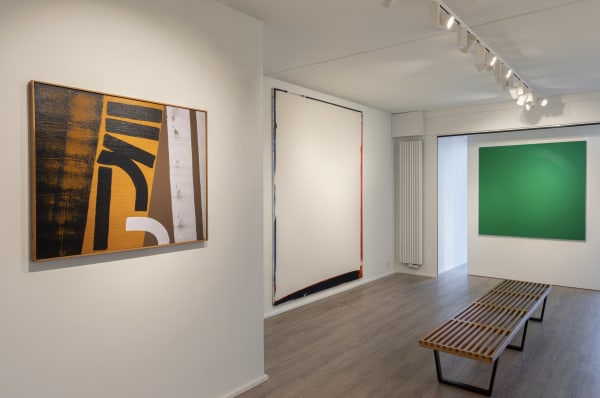Josef Albers
Josef Albers, a pioneering artist and educator, was born on March 19, 1888, in Bottrop, Germany.
Albers’ artistic journey began with his enrollment at the prestigious Bauhaus school in 1920. Under the guidance of Walter Gropius, Wassily Kandinsky, and Paul Klee, Albers honed his skills and developed a deep appreciation for the interplay of color, form, and space. During this time, he explored diverse mediums such as painting, printmaking, and glasswork. Albers’ work at the Bauhaus demonstrated his fascination with the potential of color and its effects on visual perception. His series of Homage to the Square paintings, which he began in the 1950s and continued throughout his career, became iconic representations of his artistic philosophy. These paintings featured nested squares of varying hues, exploring the optical illusions and emotional impact of color relationships. In 1933, with the rise of the Nazi regime, Albers immigrated to the United States, where he continued his artistic practice and teaching career.
As a teacher, Josef Albers had a profound influence on generations of artists. His groundbreaking book Interaction of Color, published in 1963, became a seminal work in color theory and art education. Albers emphasized the subjective nature of color perception and the importance of exploring color interactions. In 1950, Albers became the head of the design department at Yale University’s School of Art. Throughout his career, Albers also worked on projects in architectural glass, creating stunning glass panels that exemplified his meticulous attention to color and its transformative effects on space.
Josef Albers’ art and teaching were marked by a relentless pursuit of understanding the visual elements of art, particularly color and its complexities. His innovative approach to color theory and geometric abstraction had a profound impact on the development of modern art and design. On March 25, 1976, he passed away in New Haven, Connecticut.
-

The Edge
1 August - 13 September 2020 QG KnokkeStep into the captivating exhibition, "The Edge," at QG Gallery. Experience the transformative power of abstraction as renowned artists redefine artistic expression. Marvel at Josef Albers, Alan Charlton, Sam Francis, Gunther Förg, Olivier Mosset, Kenneth Noland, Richard Nonas, and Jan Schoonhoven's innovative works. Join us on a journey of artistic exploration and embrace the beauty of the unknown.Read more
-

The Moment is Eternity
5 September - 7 December 2019 QG BrusselsDiscover "THE MOMENT IS ETERNITY – GERMAN ABSTRACTION: PAST & PRESENT" exhibition at our gallery. Experience the transformative works of influential German artists who reshaped the art landscape after WWII. From Josef Albers to Gerhard Richter, this show presents a complete generation of artists who defied censorship and created experimental and distinctive abstract art. Immerse yourself in Josef Albers' color-focused "Homage to the Square" series, Hans Hartung and Gerhard Richter's lyrical abstractions, and Katharina Grosse's vibrant installations. Explore the radical use of materials by Imi Knoebel and Gunther Förg. Witness the monumental stone sculpture by Ulrich Rückriem and the kinetic sculpture by Gerhard Von Graevenitz. Each artwork in this exhibition represents a significant moment in art history, inspiring future artists and movements. Join us to delve into the rich legacy of German abstraction and experience the eternal essence of art.Read more

